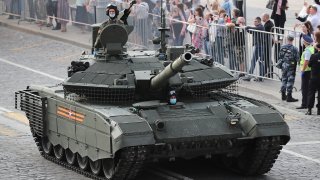Russia's T-90M Tank: Mind-Blowing Armor Upgrade or Waste of Rubles?
As defense expert Michael Peck pointed out, the T-90M “seems impressive, but Russian tanks always look good until they are actually used in combat.”
Why the T-90M Matters: In 1992, not long after the surprise collapse of the Soviet Union, Russia unveiled the T-90 tank – a third-generation main battle tank that is still in service today.
The T-90 was built as a replacement for second-generation tanks like including the T-64 and the T-72, bridging the gap between the Cold War and today.
And in 2017, Russia unveiled an upgraded version of the T-90 – the T-90M – suggesting that Russia’s hallmark tank will remain in service for years to come.
An Upgraded T-90
The T-90 had been in service for about a quarter-century when the upgraded T-90M entered service with the Russian army.
The T-90M, while upgraded from the third-generation T-90, is not quite a fourth-generation tank (currently under development with some advanced nations). Rather, the T-90M is a “modernized” third-generation tank.
One area where the T-90M is improved upon the original is the armor. While the T-90 relied upon Kontakt-5 armor, the M-variant will be encased within Relikt built-in Explosive Reactive Armor (ERA). ERA is capable of protecting against tandem warheads – and reduces the chance of penetration from armor-[piercing fin-stabilized discarding sabot (APFSDS) rounds.
The T-90M has other enhanced safety features, too, including rubber side skirts; cage armor; special netting; spall lining. To further protect the crew, the T-90M uses an NBC system, which uses tank interior sealing and overpressure generation to protect against mass destruction weapons. And cleverly, the T-90M features a smoke grenade discharging countermeasure that activates anytime a laser beam sights tank – making the tank harder to see and hit once targeted.
The T-90M doesn’t just feature upgraded defensive features, but also offensive features. Namely, the main gun was upgraded from the T-90’s 2A46M to the T-90M’s 2A46M-4. The upgraded gun has superior range and a 15-20 percent improvement in accuracy. The gun, which like all Russian tanks uses 125mm ammunition, can fire either APFSDS, HE, or HE-FRAG rounds.
Feeding the T-90M’s 2A46M-4 is an autoloader that can carry 22 rounds at a time (while 21 rounds are carried in reserve, making for 43 rounds total). In addition to the main gun, the T-90M can fire a 9M11( Refleks anti-tank guided missile – which has a 4-5 kilometer range and can be used against low-flying helicopters.
For propulsion, the T-90M relies on a v-92S2 multi-fuel diesel engine, which can provide 1,000 horsepower. The tank also has an Auxiliary Power Unit (APU) on board, which provides the T-90M with energy for non-propulsion purposes.
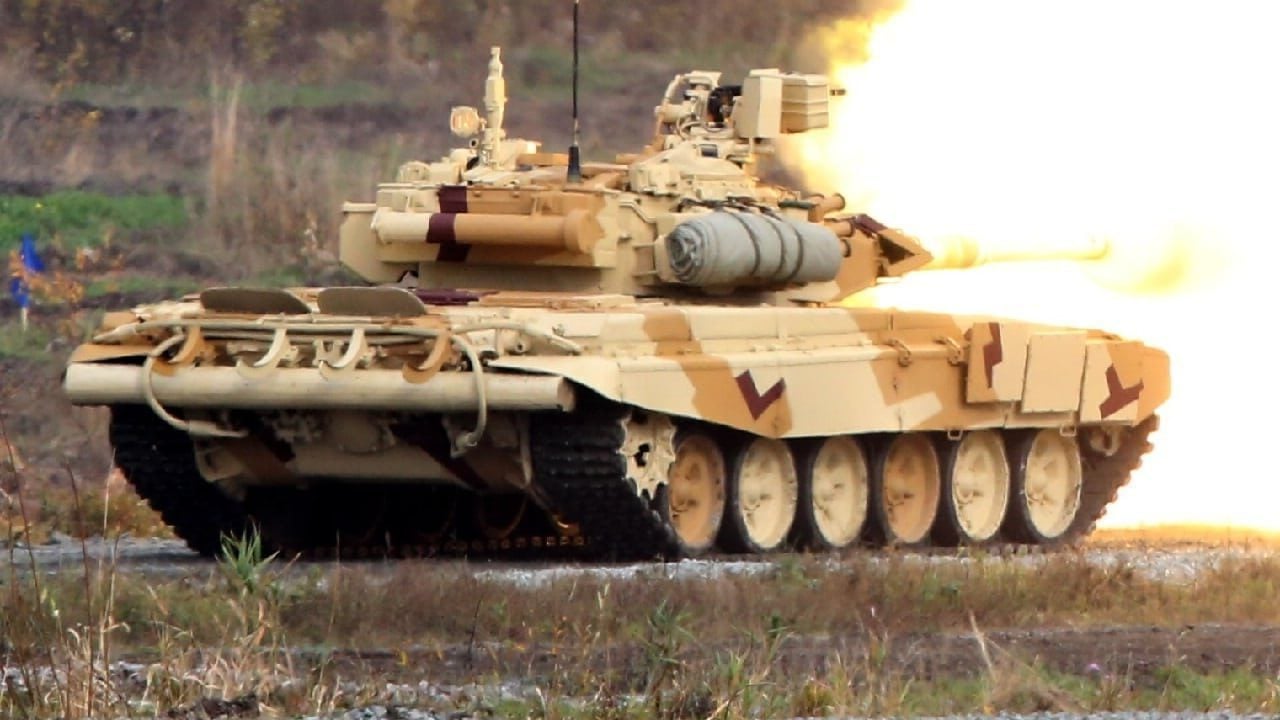
One of the more curious bits of tech on the T=90M is the self-entrenching blade – which is used in exactly the manner the title suggests. The self-entrenching blade can build the tank an emplacement in 12-40 minutes. The tank can also be outfitted with a mine plow. Or when necessary, the tank can be outfitted with a deep wading kit that permits the T-90M to ford water obstacles up to 5 meters deep.
Operating the T-90M
The T-90M needs just a three-man crew; a commander, gunner, and driver are used to operate the tank. To make operating the tank easier, the crew has a communication and command suite, as well as digital communication systems that are on par with Russia’s fourth-generation tank, the T-14 Armata.
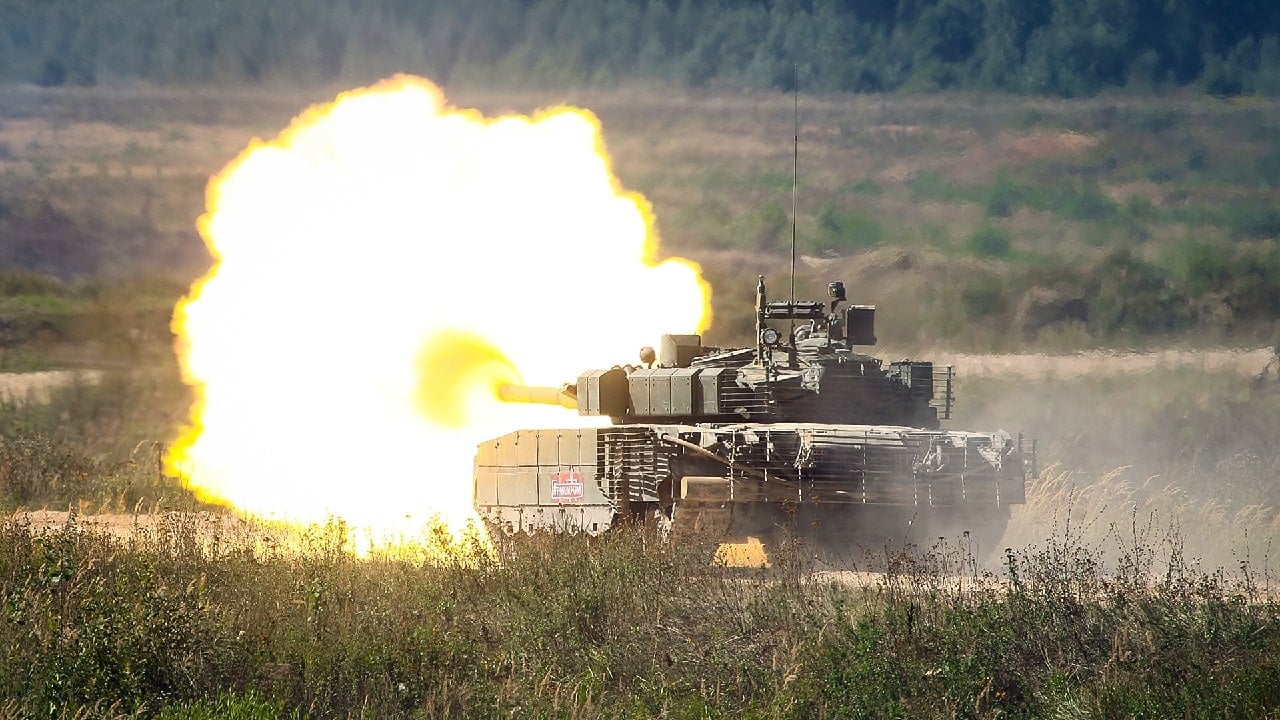
Curiously, the T-14 was designed to replace the 1992-debuted T-90. But the older tank is more cost effective and easier to maintain, so naturally, the Russians have decided to keep the T-90 around awhile longer. Besides, a direct swap of the T-90 for the modern T-14 would have probably been more than the Russians could have afforded. The T-90M is the answer: an upgrade from the T-90 – that doesn’t break the bank to the extent of the T-14. Actually, T-90s and T-90Ms have been used prominently in the ongoing Russo-Ukraine War.
Indeed, the T-90 has been used extensively in Ukraine. As of September 2023, the online blog Oryx reported that Russia had lost at least 79 T-90s. T-90Ms accounted for nearly half of the T-90 casualties with 21 destroyed, 7 damaged, 6 abandoned, and 3 captured. Not a great track record so far. The Ukrainians have proven to be adept at targeting Russian tanks, using a variety of anti-tank missiles, including modern “top attack” missiles like the American FGM-48 Javelin and the UK-Swedish NLAW.
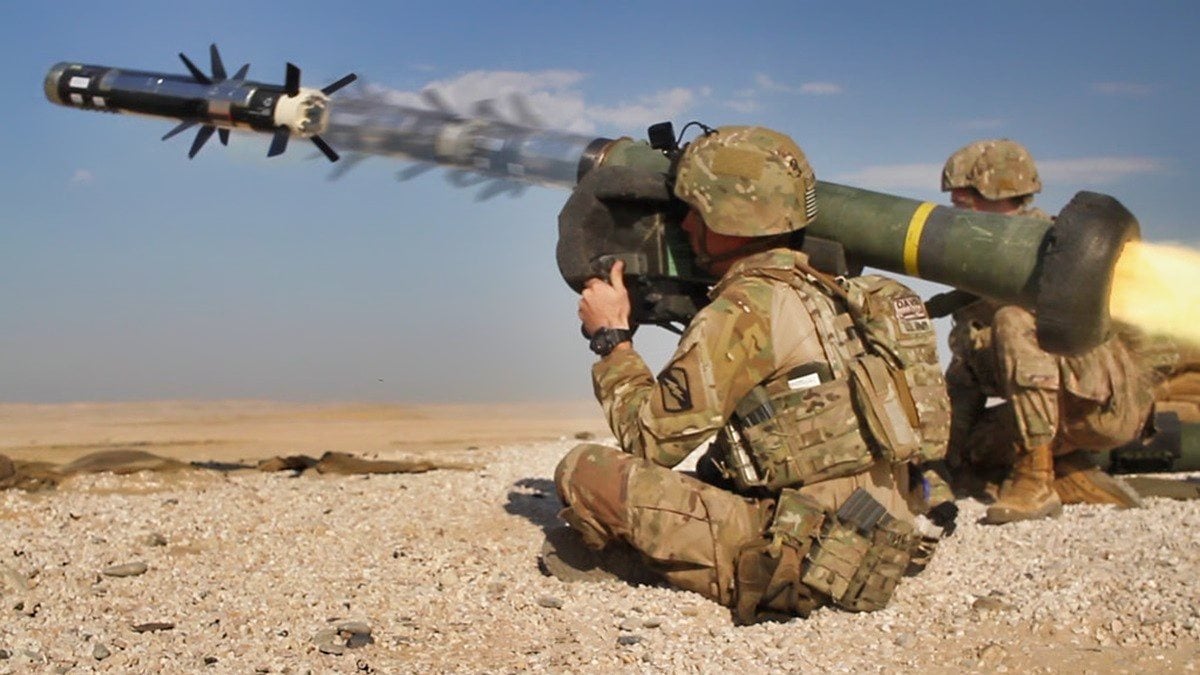
The conflict in Ukraine, and the massive tank casualties, harkens the Eastern Front of World War II in which astounding tank battles were fought between the Nazis and the Soviets. Eastern Europe is commonly regarded for a terrain that facilitates tank warfare. But as Russian carnage suggests, the terrain also lends to tank vulnerabilities. The modern T-90M, despite its myriad enhancements, is still vulnerable to relatively cheap and simple anti-tank measures.
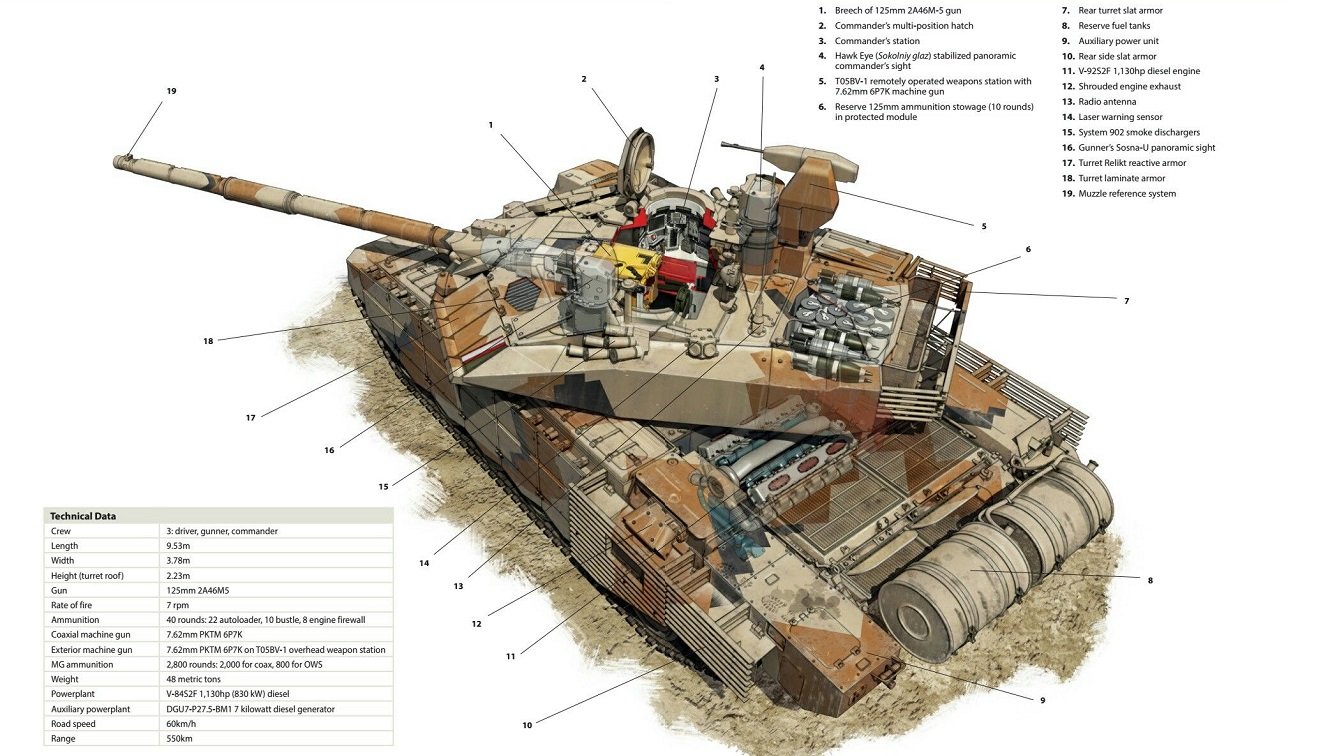
As defense expert Michael Peck pointed out, the T-90M “seems impressive, but Russian tanks always look good until they are actually used in combat.”
About the Author
Harrison Kass is a prominent defense writer and military expert. An attorney, pilot, guitarist, and minor pro hockey player, Harrison joined the US Air Force as a Pilot Trainee but was medically discharged. Harrison holds a BA from Lake Forest College, a JD from the University of Oregon, and an MA from New York University. Harrison listens to Dokken.
All Images are Creative Commons.


